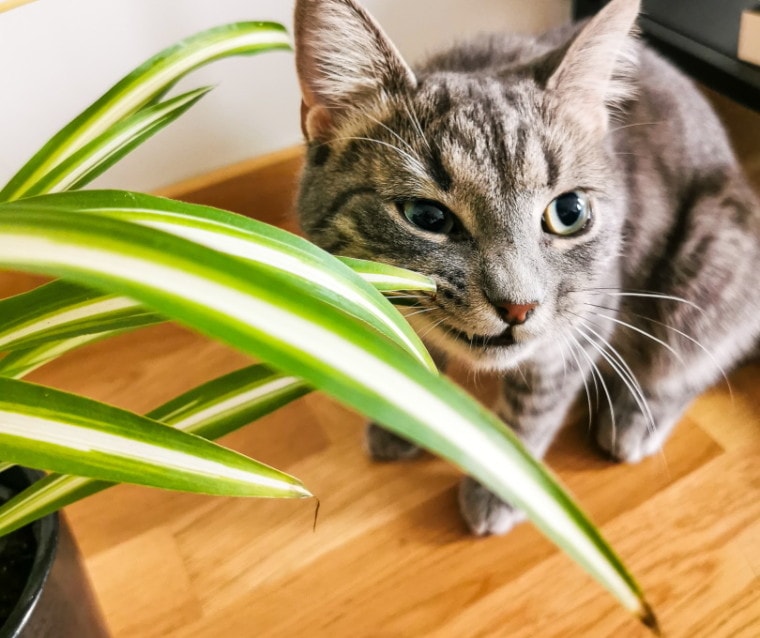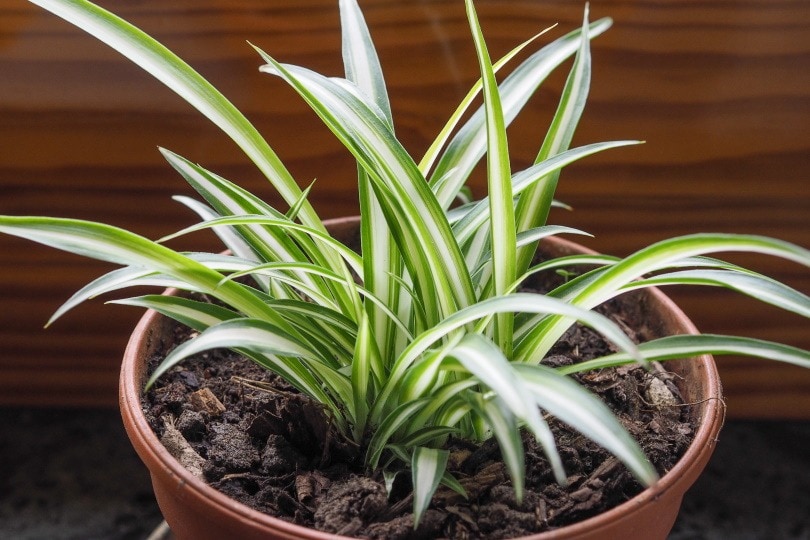
Chlorophytum comosum, commonly known as spider plant or spider ivy, is a common household plant, popular due to its ease of care and beautiful appearance. Many cats are drawn to this plant and seem to have a unique affinity toward it, even to the point where they may start chewing on it! There are several household plants that are toxic to your feline, including the common peace lily, but what about spider plants? Are they toxic to cats?
Luckily, the answer is no. Spider plants are non-toxic and not harmful to cats in any way, and they are a perfect addition to cat-friendly households. Let’s take a deeper look at the relationship between your cat and this unique plant.
Why Are Cats So Attracted to Spider Plants?
There’s no denying that many cats are strangely attracted to spider plants, and there are several theories as to why exactly this is. Spider plants may seem bland to our noses, but to the powerful noses of cats, these plants do give off a certain scent. This could be one of the reasons that cats are so attracted to the plant, although the scent is so subtle that this is unlikely.
Another common theory is the long, dangling leaves of the spider plant. Cats are naturally attracted to anything long and prey-like, and spider plant leaves make the perfect target practice for hunting! While this may be true for bored cats, it still doesn’t really explain why cats chew on the leaves without actually playing with them.
The most likely and perhaps surprising reason for your cat’s affinity toward this plant is that spider plants are mildly hallucinogenic. These plants produce an effect similar to catnip, and your cats are simply getting a mild kick from eating the leaves! Luckily, this is harmless to your feline, just the same as catnip is harmless to them.

Are Spider Plants Harmful to Cats?
While spider plants may produce a mild hallucinogenic effect in your feline, they are completely non-toxic to cats, even at levels far beyond what your cat would eat. Both the American Society for the Prevention of Cruelty to Animals and the National Capital Poison Center list the spider plant as non-toxic.
Of course, you don’t want to purposely give this plant to your cat, as they should not be ingesting large amounts of fresh greens, and it’s probably best to try to keep your cat away from your beloved spider plant. The mild hallucinogenic compound contained in spider plants and the leaves can potentially cause digestive issues and nausea in your feline if they eat large amounts.

How to Keep Your Cat Away From Spider Plants
Even though spider plants are, for the most part, harmless to cats, you’ll still want to keep them away from your feline. Cats may be fine munching on a few leaves, but your plant certainly won’t be! You don’t need to get rid of your spider plant altogether, though, and there are a few options to try first.
The easiest way to keep your cat away from your spider plant is to simply hang in a place that is out of your cat’s reach. Of course, cats are expert climbers, and once they’ve got a taste for the spider plant, they’ll scale any height to reach it, so it needs to be hung in a place where your cat can’t access it. Pruning the plant can also help, as your cat won’t have access to the long, overhanging leaves.
Other options to try include cat deterrents. These sprays emit a harmless, odorless spray that will hopefully deter your cat somewhat. Of course, once they’ve got the taste for spider plants, these may not work.
Conclusion
If you’ve noticed your cat chewing on the leaves of your spider plant at home, there’s no reason to worry. Spider plants are non-toxic and pose no threat to cats unless consumed in very large quantities. It’s still best to avoid letting your cat eat the leaves, as your plant will get damaged, and it may cause digestive issues in your feline, too.
See also:
- Are Snake Plants Toxic to Cats? What You Need to Know!
- Are Christmas Trees Toxic to Cats? What You Need To Know!
Featured Image Credit: Beatrice Abrahamsson, Shutterstock






